Tsukuyomi, the divine god of the moon, plays a central role in Japanese mythology. Representing the lunar cycles and watching over the nights, he balances the energy of his brother, the sun god Amaterasu. The legend of Tsukuyomi offers a fascinating insight into the world according to the Shinto religion and continues to influence Japanese culture to this day.
The mythological origins of Tsukuyomi
Tsukuyomi, the moon god in Japanese mythology, was born in a unique and symbolic way. According to ancient Japanese texts such as the Kojiki and the Nihon Shoki, Tsukuyomi came from the right eye of Izanagi, a creator god, when he was purifying himself after visiting the world of the dead. This birth from Izanagi's eye shows how Tsukuyomi is connected to the heavens and the spiritual aspect of the world.
The way Tsukuyomi was created is rich in meaning. Being born of the right eye emphasizes one's connection with light and clarity, qualities often associated with the moon. The moon itself is seen as a symbol of reflection and calm, and Tsukuyomi embodies these traits. It represents the night and its mysteries, thus contrasting with its sister Amaterasu, the goddess of the sun, who symbolizes the light and energy of the day.
This myth not only explains the origin of Tsukuyomi but also highlights the importance of natural and cosmic balances in Japanese culture. Tsukuyomi is more than just a god of the night; it plays a crucial role in maintaining order and regulating the cycles that are vital to life. Its presence continues to influence religious beliefs and practices in Japan, reflecting the deep connection between the Japanese people and the natural forces that shape their world.

Tsukuyomi: a true symbol
Tsukuyomi symbolizes order, regularity and clarity in the night. Its connection with the moon influences tides and guides plant growth cycles, showing its essential role in nature. This influence is often celebrated in Japanese culture, where the moon is seen as a source of beauty and inspiration.
Tsukuyomi's characteristics remind us of the importance of balance between opposing forces. As the moon illuminates the night, Tsukuyomi brings light into the darkness, helping to maintain the balance between day and night symbolized by Tsukuyomi and her sister Amaterasu, the sun goddess. This duo perfectly illustrates the duality and harmony in Japanese mythology, reflecting the natural cycles that are fundamental to life.
The stories surrounding Tsukuyomi enrich Japanese understanding of natural cycles and the laws of the universe. Through it, we explore themes of justice and purity, aspects often represented in Shinto festivals and rites that honor the moon. Tsukuyomi thus embodies not only the regulation of natural phenomena but also the moral principles that guide daily behavior. This dimension makes Tsukuyomi a central figure in legends but also in the cultural and spiritual values of Japan.

Tsukuyomi's place in folklore and legends
Tsukuyomi features in several captivating stories that explain her role and behavior among other deities. The most popular legend is that of his conflict with Uke Mochi, the goddess of food. This story highlights Tsukuyomi's strict and sometimes ruthless personality.
According to the myth, during a feast, Uke Mochi prepared food in a way that Tsukuyomi found disgusting, she produced food from different parts of her body, which deeply offended Tsukuyomi. In response, he killed Uke Mochi. This act of violence shocked Amaterasu, who considered Tsukuyomi's behavior unacceptable and decided to part ways with him, explaining why the sun and moon are rarely seen together in the sky.
This incident not only illustrates Tsukuyomi's strict and pure character traits but also highlights the consequences of his actions, which have a lasting impact on Shinto cosmology. The story shows how Tsukuyomi influences relationships between deities and highlights the importance of balance and respect in divine interactions. It also serves as a reminder that even gods can be held accountable for their actions, a principle that resonates deeply in the ethical teachings of Shinto.
This myth, among others, continues to be a subject for reflection on justice, purity and the consequences of actions, recurring themes in Japanese legends. Tsukuyomi, through these stories, remains a fascinating figure, symbolizing the complexities of relationships and natural laws that govern the world.

The cult of Tsukuyomi
Although Tsukuyomi is not as widely revered as some other kami, such as Amaterasu, there are nevertheless places in Japan where he is specially honored. The cult of Tsukuyomi may be less visible in everyday life, but it is deeply rooted in certain Shinto traditions and celebrations.
Shrines dedicated to Tsukuyomi are rare, but they play a crucial role for the communities around them. A notable example is the Munakata Taisha, located in Fukuoka Prefecture, which includes shrines dedicated to Tsukuyomi as well as other important deities. These sites are often places of pilgrimage during specific festival times, where rituals are performed to honor the moon god and seek his blessings for the community.
In addition to this type of shrine, Tsukuyomi is also celebrated during various Shinto festivals, where night rites can take place under the light of the moon, symbolizing its presence and his influence. These celebrations may include traditional dances, food offerings, and specific prayers intended to invoke the clarity and purity that Tsukuyomi represents.
The cult of Tsukuyomi, although it may not be as ubiquitous as that of other kami, is a testimony to the diversity and richness of religious practices in Japan. For devotees and practitioners, Tsukuyomi embodies essential aspects of nightlife and natural cycles, and its honor within shrines and festivals helps maintain a living connection to these ancient traditions.
Tsukuyomi in popular culture
Tsukuyomi has transcended ancient texts to firmly establish itself in modern popular culture, notably in anime, manga and video games. His depiction as a mysterious and powerful figure often reflects his mythological roots, enriching contemporary narratives with themes of mysticism and nocturnal power.
In anime and manga, Tsukuyomi often appears as a major character or influence. For example, in popular series like "Naruto", Tsukuyomi is used to refer to powerful techniques related to mind-controlling illusions, which can be seen as an extension of his role as the god of the moon influencing emotions and minds. Likewise, characters or entities inspired by Tsukuyomi in works like "Sailor Moon" reflect her attributes of control and influence over cycles, leaving a distinct imprint in widely consumed narratives.
Video games, notably those in the "Final Fantasy" and "Persona" series, also include characters or summons named Tsukuyomi, where they are often associated with powers linked to the moon, the night and the darkness. These depictions help maintain Tsukuyomi's relevance in the collective imagination, allowing new generations to discover and interpret this ancient god in innovative and engaging ways.
Tsukuyomi's influence in pop culture serves not only to entertain but also to educate people about Japanese mythology, making him a bridge between the past and the present. This continued presence in various media shows how classic myths can be adapted and remain meaningful, even in a rapidly changing modern world.

It's time to wrap things up! Tsukuyomi, the moon god in Japanese mythology, continues to enrich both cultural traditions and modern popular culture. Its presence in ancient legends and its incarnation in contemporary media show the depth of its impact and the durability of its mystery. Through festivals, shrines, anime, and video games, Tsukuyomi remains a captivating figure who invites a deeper exploration of the richness of Japanese culture. For those visiting Japan or interested in its myths, Tsukuyomi will offer a fascinating window into the interconnection between the cosmos, culture and daily life.




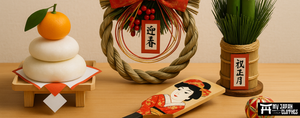
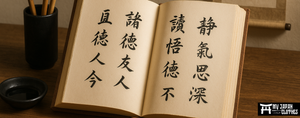










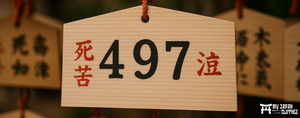








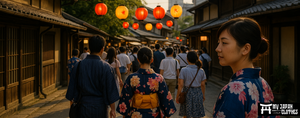








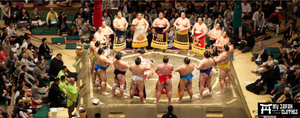













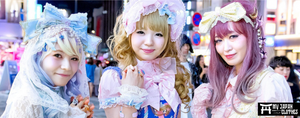



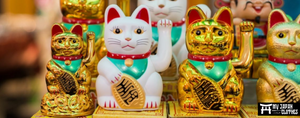
Leave a comment